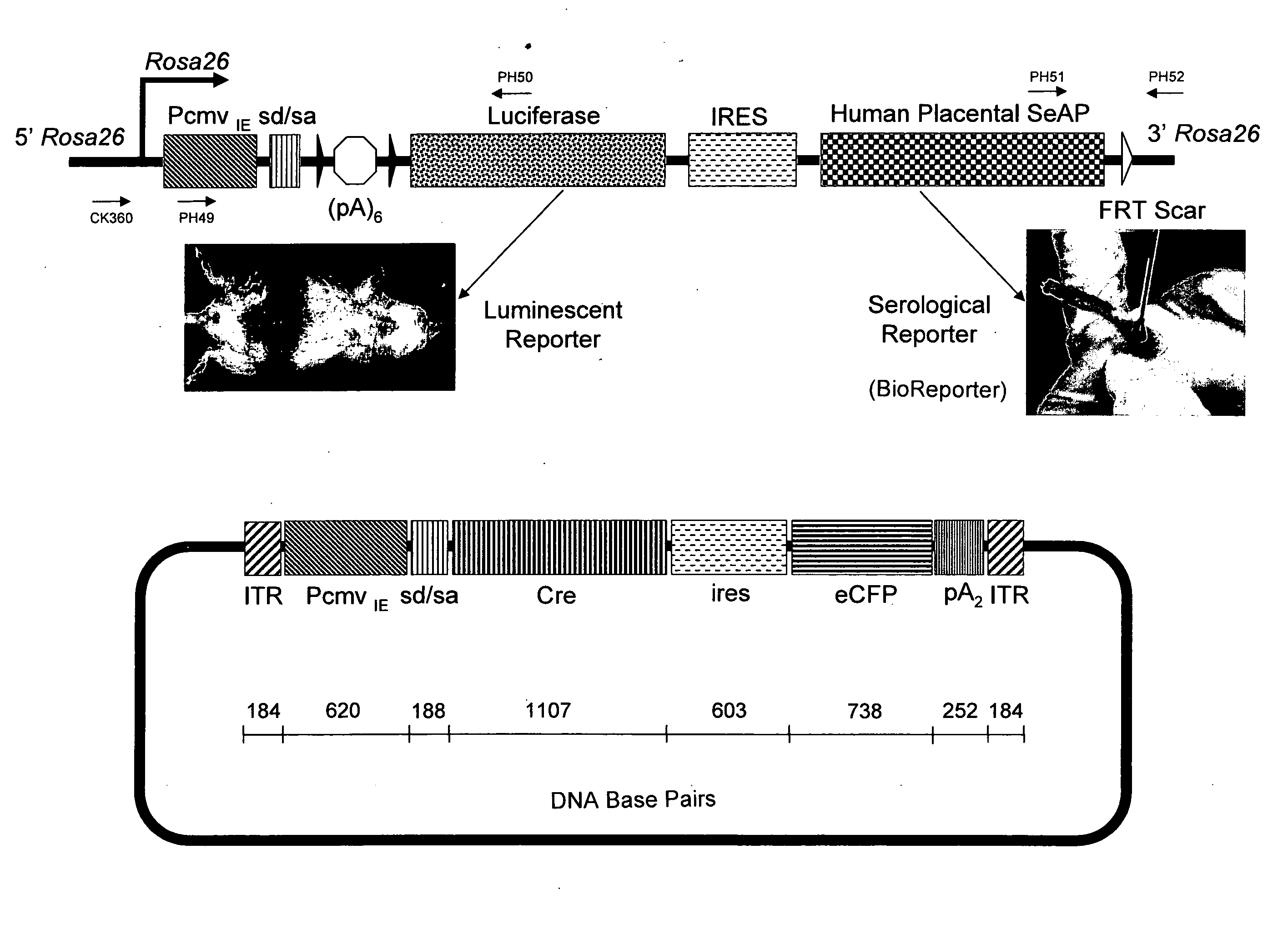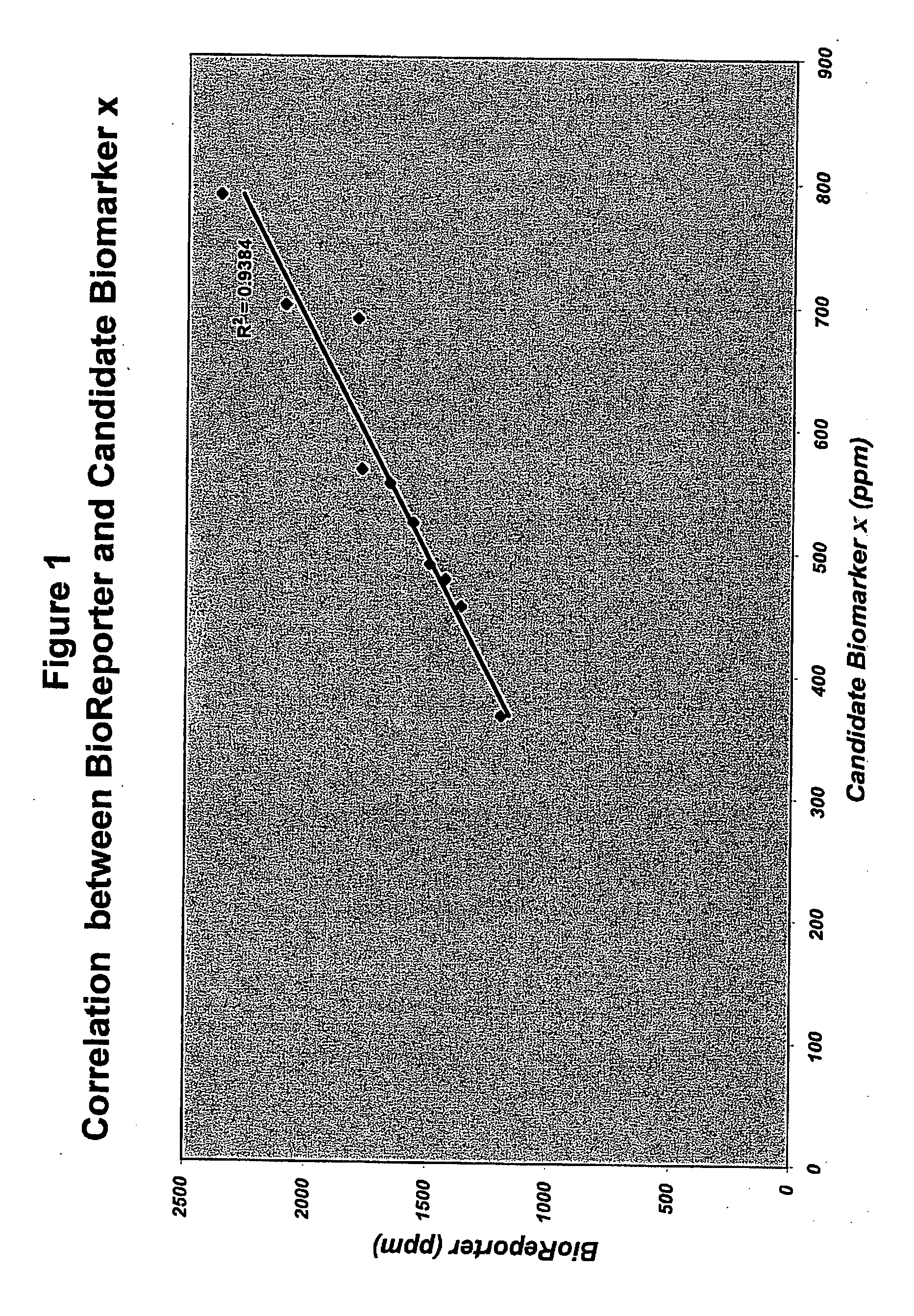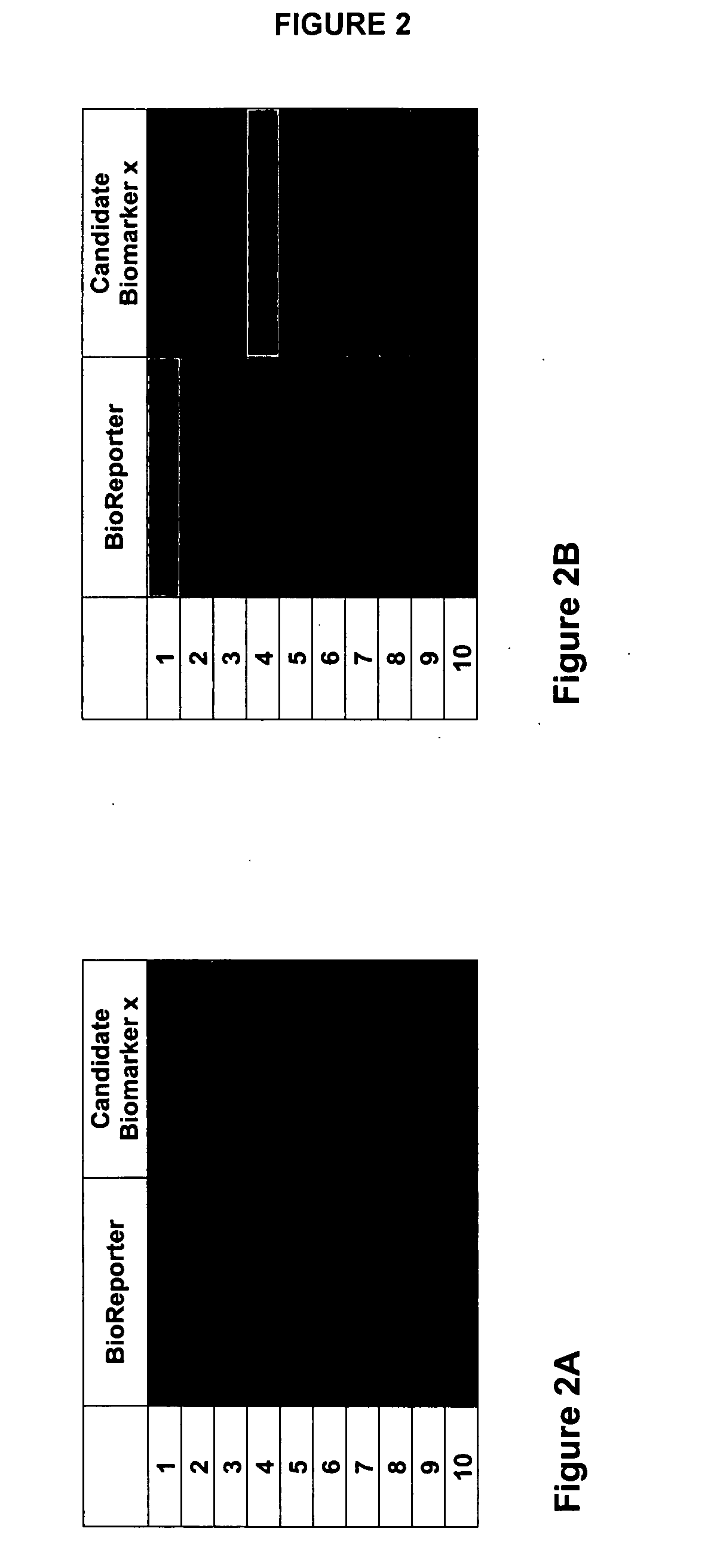Methods and compositions for identifying biomarkers
a biomarker and composition technology, applied in the field of identification and validation of diagnostic biomarkers, can solve the problems of low signal-to-noise ratio, difficulty in identifying useful biomarkers, and inability to accurately or consistently associate,
- Summary
- Abstract
- Description
- Claims
- Application Information
AI Technical Summary
Problems solved by technology
Method used
Image
Examples
example 1
Generation of Dual Reporter Mouse Line
[0112] The conditional LUSAP reporter allele was designed to express both firefly luciferase and human placental secreted alkaline phosphatase constitutively at high levels following activation by Cre recombinase (FIG. 3A). The two reporter genes were expressed as tandem cistron by means of a human internal ribosome site (IRES). The construct was targeted to the Rosa26 locus in a manner similar to methods known in the art (see, e.g., Safran et al., (2003), Mol Imaging, 2:297-302; Soriano, (1999), Nat Gen 21:70-71; Srinivas, et al., (2001), BMC Dev Biol, 1:4) except that the native Rosa26 promoter was augmented by a CMV immediate-early promoter / enhancer and SV40 late viral protein gene 16S / 19S splice donor and acceptor signal sites to maximize ubiquitous expression. A pRosa26-1 plasmid (Soriano, (1999), Nat Gen 21:70-71) containing genomic DNA for the Rosa26 locus was used. A targeting vector was constructed which consisted of (in 5′ to 3′ order...
example 2
Optical Imaging of BioReporter Mice
[0118] Serial luminescence imaging of LUSAP BioReporter mice was performed before and after intraperitoneal (IP) injection with a single luciferin dose, 150 mg / kg (10 μl / g) body weight (Caliper—Xenogen, Alameda, Calif.). For firefly luciferase imaging of the right thigh, a mouse expressing luciferase as a Cre / LoxP reporter allele was intramuscularly administered with 0.1 ml (5×1010 particles) of an adenoassociated virus constitutively expressing Cre (AAVcre). After three weeks of AAVcre injection the mouse was administered with an intraperitoneal injection of a single luciferin dose, 10 μl / g body weight.
[0119] A Z / RED-TgGoZRED / WT HPRTCre / WT monomeric red fluorescent protein reporter mouse with ubiquitous Cre activation was shaved in the belly region before imaging. Luminescent and fluorescent imaging of live animals was performed using Xenogen IVIS® 200 system (Caliper—Xenogen). The Xenogen instrument employs a scientific grade, cryogenically coo...
example 3
Serological Bioassay Measurement
[0122] For detection of SEAP in the bloodstream, a blood sample was isolated from the animal through saphenous vein puncture into a microfuge tube with minimal hemolysis. The blood was allowed to clot at RT for 30-60 minutes (min) and was centrifuged at 2500×g for 15 min at 4° C. The clear / yellow supernatant serum was removed to a fresh tube and stored at −20° C. or assayed immediately with the BD Great EscAPe™ SEAP chemiluminescent assay (BD Biosciences Clontech, Palo Alto, Calif.) according to the manufacturer's instructions, which includes a 30 minute 65° C. heating step to inactivate endogenous murine serum phosphatases. Assay samples containing 12.5 ul serum each were measured for luminescent signal using Xenogen IVIS® 200 system (Caliper—Xenogen). Imaging was performed 15 min after sample preparation with the standard settings of 60 sec exposure time, 2×2 binning, 12.6 cm field of view, and f / stop of 2 / 4.
PUM
| Property | Measurement | Unit |
|---|---|---|
| time | aaaaa | aaaaa |
| time | aaaaa | aaaaa |
| time | aaaaa | aaaaa |
Abstract
Description
Claims
Application Information
 Login to View More
Login to View More - Generate Ideas
- Intellectual Property
- Life Sciences
- Materials
- Tech Scout
- Unparalleled Data Quality
- Higher Quality Content
- 60% Fewer Hallucinations
Browse by: Latest US Patents, China's latest patents, Technical Efficacy Thesaurus, Application Domain, Technology Topic, Popular Technical Reports.
© 2025 PatSnap. All rights reserved.Legal|Privacy policy|Modern Slavery Act Transparency Statement|Sitemap|About US| Contact US: help@patsnap.com



